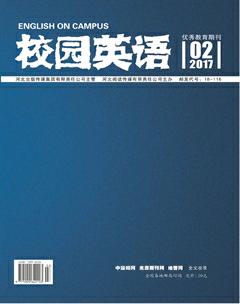The Study of Ornamental and Ideographic Factorsof the Pattern and Color of Tujia Brocade
邓子午
【Abstract】Tujia peoples traditional brocade has varied styles in its pattern, and the colors are also very bright. Tujia people show their own humanistic spirits and aesthetic habits to the world by making brocade.Beneath the gorgeous color, it is their life-loving and nature-awing attitude.
【Key words】Yujia Brocade; Color; Color Composition; Primitive Religion
Color is a kind of visual symbol, it is also a very important component of contemporary graphic design, it is an important element which composed the Xi Lan Ka-pu Pattern of Tujia brocade, its subtlety and subjectivity reveal the connotation of the Tujia brocade.
I. Color Composition in Tujia Brocade
1. Color Formation
The coloring style of Tujia brocade was highly affected by dressing style in the early stage of Bureaucratization of Native Officers in Qing Dynasty. According to
2. Color Contrast
The massive use of contrasting colors provide stronger visual impacts, for example: black and white, red and green, yellow and blue, which are widely used in Chinese folk art. Colors like red, yellow, and green are very closely related to colors of plants, they are also complementary colors with the strongest visual impact in the art of agricultural civilization. Consequently, they became the permanent symbols of the beauty of nature and the happiness of people. Therefore, Tujia brocade always have dark blue, scarlet, black as its background colors, and acid blue, medium yellow, orange and pink as its decorative pattern colors.
3. Contrast of complementary colors
Apart from the massive using of contrasting colors, in the making of Tujia brocade, the workers also use another approach called changing value, which means changing the lightness of the colors in the same hues with proper order. This method gives the picture a feeling of gradients.
II. Origins and Implications of Color Composition
1. Aesthetic Consciousness Born of Living and Nature
Russian theoretician of art and literature Nikolay Gavrilovich Chernyshevsky once said: “Arts are come from life and higher than life”. Tujia brocade directly shows the peoples daily life, traditions, customs and religion. Various kind of shapes and rich colors show the very true part of Tujia peoples emotions and their history.
2. Dominant Tone of Red and Black in Tujia Brocade
Tujia peoples love for the red color come from their love and awe for the sun and fire, in the primitive era, fire symbolizes light and power of life. Tujia people living at the basin of You River in western Hunan province made June 6th (Lunar Calender) the birthday of the sun. When this day comes, they will give offerings, burn incenses and paper to the sun to pray for sunshines warmth.
The ancestors of Tujia people started to believe Taoism very long time ago, in Taoism, the color black is regarded as the supreme among all colors: “heaven represents mystery, mystery represents black, black represents infinity”. This feature can be often found in a kind of “cover skirt” in Tujia area, the “skirt” have a black cloth as its base, with “Tai Tai Flower” pattern on both left and right side and the bottom, the opening on the top means “going straight to black heaven”. “Tai Tai Flower” have much red, which could eliminate the detrimental and evil, so this kind of “skirt” are usually used as kids blanket.
3. Taboo of Using White Color
Tujia people deem that white color is an ominous color. In “Five Colors”, white belongs to gold, and gold belongs to the west, people will go to the “western world” when they are dead, moreover, the god of the west is White Tiger who rules over deaths and disasters. People only wear white coifs in funerals, its very seldom to see any white color in their daily life.
III. Conclusion
“The content , cultural connotation and social function of Tujia peoples folk arts are deeply and highly related to their social status and religious beliefs”. 1In the modern life filled with abundant material and cultural enjoyment, the plain and true are can give us more inspirations. Research of Tujia brocade shall not focus on its craft process or commercial value, but on its inner emotion and history.
References:
[1]XuLian.Chinese folk arts.Wuhan:Huazhong University of Science and Technology Publishing House,1994.Page 192.

